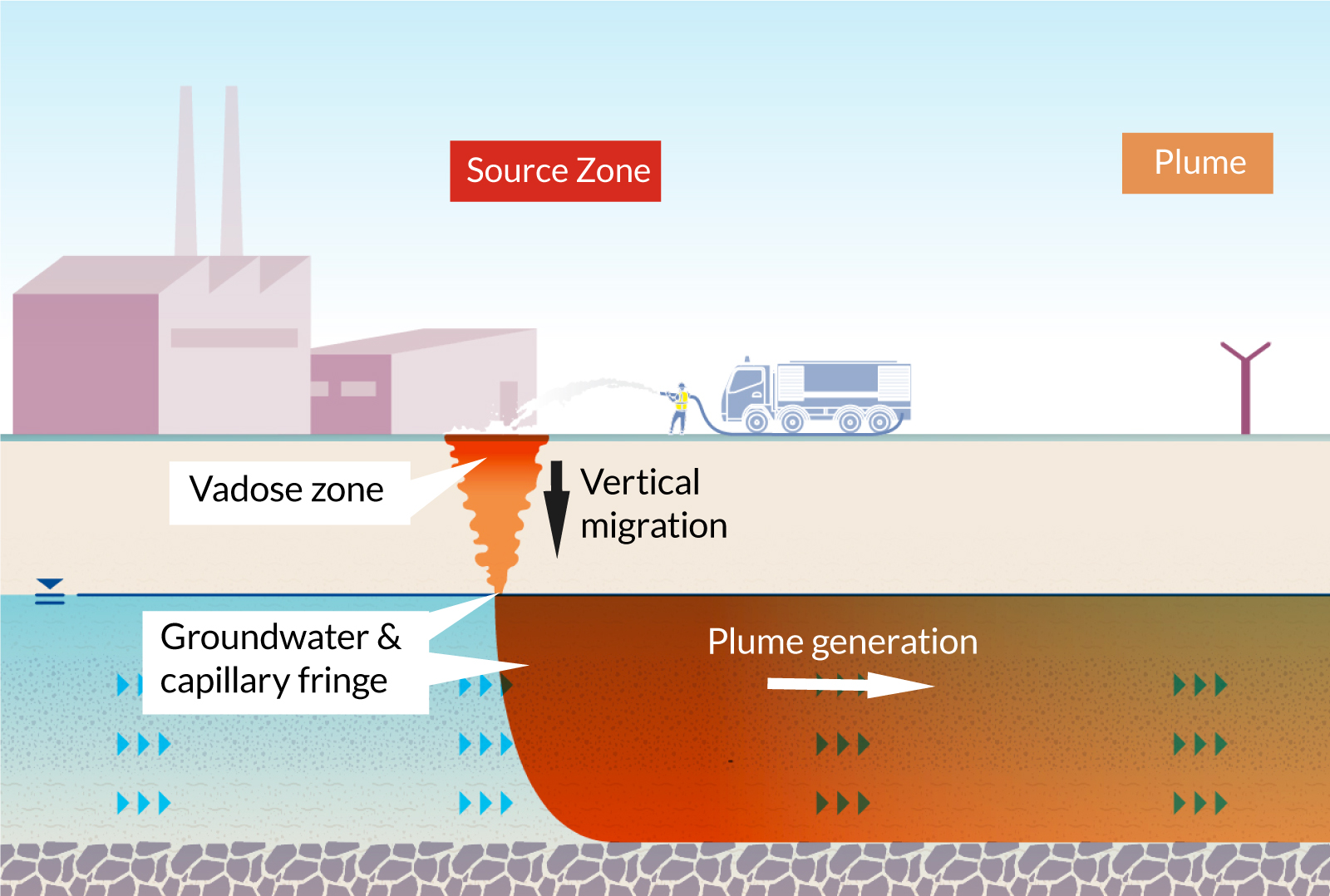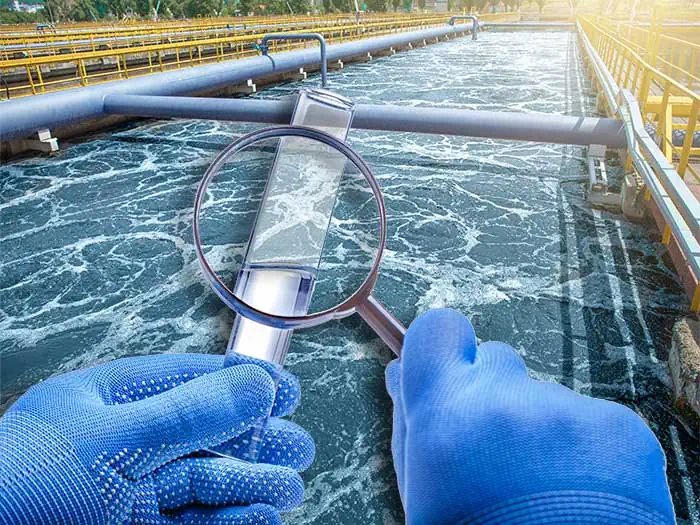Ingenious PFAS Treatment Solutions for Safer Water
The enhancing frequency of PFAS contamination in water materials necessitates a critical examination of cutting-edge treatment options. Additionally, arising bioremediation strategies offer a more lasting approach to dealing with PFAS obstacles. pfas management.
Overview of PFAS Contamination
PFAS contamination has become a significant environmental and public wellness issue. Per- and polyfluoroalkyl compounds (PFAS) are a team of artificial chemicals known for their perseverance in the setting and human body, leading them to be frequently referred to as "for life chemicals." These compounds have actually been extensively used in different sectors, consisting of firefighting foams, water-repellent fabrics, and food product packaging, mostly as a result of their water- and grease-resistant buildings.
The extensive usage of PFAS has resulted in their detection in soil, water products, and also in the blood of human beings and animals. Studies have linked PFAS exposure to numerous health issues, including developmental effects in infants, immune system dysfunction, and different types of cancer cells. Additionally, the environmental persistence of these compounds complicates their deterioration and removal, raising problems regarding long-term eco-friendly influences.
Regulative bodies are increasingly implementing rigid guidelines to monitor and lower PFAS levels in alcohol consumption water and various other environmental tools. As understanding of PFAS contamination grows, it has actually ended up being essential for areas and markets to seek effective therapy remedies to reduce direct exposure and protect public health.
Advanced Purification Technologies
As the urgency to resolve PFAS contamination increases, advanced purification technologies have actually become an essential component in the removal efforts targeted at getting rid of these persistent chemicals from water resources. These technologies take advantage of sophisticated mechanisms to effectively target and record PFAS compounds, which are infamously resistant to conventional therapy methods.
One of the most promising techniques is making use of granular activated carbon (GAC), which adsorbs PFAS particles because of its high area and permeable framework. This method has actually been extensively carried out in both community and commercial setups, showing significant reductions in PFAS focus. Furthermore, ion exchange resins have actually acquired traction, especially made to precisely bind PFAS ions from water, hence facilitating their removal.
Membrane layer filtration innovations, such as reverse osmosis and nanofiltration, additionally show efficiency in PFAS removal by physically separating pollutants from water - pfas management. These systems can attain high levels of pureness, making them ideal for drinking water applications
Chemical Therapy Innovations
Many chemical therapy advancements are being explored to properly address PFAS contamination in water supplies. One encouraging strategy involves the use of sophisticated oxidation procedures (AOPs), which utilize powerful oxidants such as ozone, hydrogen peroxide, or chlorine dioxide integrated with UV light to break down PFAS compounds right into less dangerous materials. This approach has actually demonstrated effectiveness in laboratory setups, revealing possible for scalability in real-world applications.
An additional innovative technique is the advancement of ion-exchange materials especially created to target PFAS. These materials can precisely adsorb PFAS substances from water, permitting their removal during treatment procedures. Current advancements have boosted the performance and ability of these resins, making them a beneficial choice for water treatment facilities.
Furthermore, researchers are checking out the use of chemical representatives like persulfate and ferrous ions to boost the destruction of PFAS in infected water. These representatives can cause chemical responses that facilitate the break down of consistent PFAS compounds.
Emerging Bioremediation Strategies
Current improvements in chemical therapy innovations have actually led the way for checking out bioremediation techniques as a practical choice for dealing with PFAS contamination. Bioremediation uses the natural metabolic procedures of bacteria to weaken or transform toxins, making it an enticing technique for tackling relentless pollutants like PFAS.
Emerging strategies in bioremediation include the usage of genetically engineered microbes that can specifically target and damage down PFAS compounds. These microbial strains are being developed for their boosted degradation abilities, increasing the effectiveness of the remediation procedure. Additionally, scientists are checking out the potential additional reading of plant-assisted bioremediation, where specific plant species may uptake and withdraw PFAS from polluted soil and water.
An additional appealing approach is the application of bioaugmentation, which entails introducing valuable bacteria right into polluted settings to increase the degradation of PFAS. This approach can help with much faster remediation timelines and enhance general effectiveness.

Regulative Structures and Specifications
A comprehensive regulatory structure is essential for effectively taking care of PFAS contamination and making certain public health and wellness protection. The boosting acknowledgment of per- and polyfluoroalkyl materials (PFAS) as environmental pollutants has actually triggered numerous government and state agencies to create requirements that control their existence in water supplies. The U.S. Epa (EPA) has developed health advisories and is pursuing establishing enforceable limitations for PFAS in alcohol consumption water.
State-level guidelines differ dramatically, with some states taking on more stringent guidelines than those recommended by the EPA. These policies often consist of maximum impurity levels (MCLs) for specific PFAS substances, monitoring demands, and reporting obligations for water utilities. Furthermore, arising structures concentrate on the removal of contaminated websites, emphasizing the need for efficient therapy technologies.

Final Thought
Finally, the advancement and implementation of cutting-edge PFAS use this link therapy options are important for addressing the prevalent concern of water contamination. Advanced filtering technologies, chemical treatments, and arising bioremediation methods collectively offer a diverse method to effectively minimize and weaken PFAS levels. As regulatory structures remain to evolve, incorporating these technologies will certainly be crucial to secure public health and recover the stability of contaminated water sources, his comment is here ultimately adding to a cleaner and safer environment.